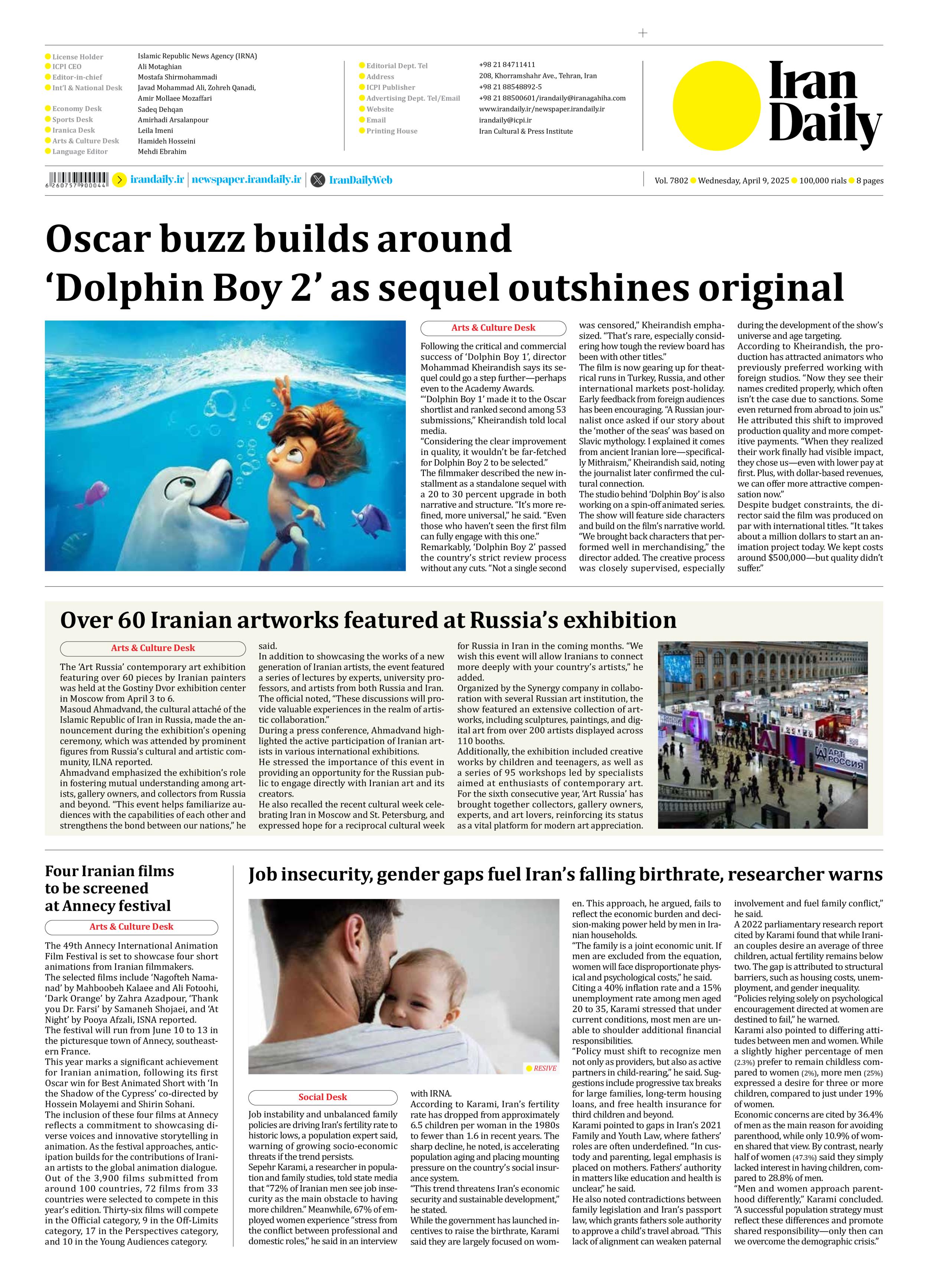
Oscar buzz builds around ‘Dolphin Boy 2’ as sequel outshines original
Following the critical and commercial success of ‘Dolphin Boy 1’, director Mohammad Kheirandish says its sequel could go a step further—perhaps even to the Academy Awards.
“‘Dolphin Boy 1’ made it to the Oscar shortlist and ranked second among 53 submissions,” Kheirandish told local media.
“Considering the clear improvement in quality, it wouldn’t be far-fetched for Dolphin Boy 2 to be selected.”
The filmmaker described the new installment as a standalone sequel with a 20 to 30 percent upgrade in both narrative and structure. “It’s more refined, more universal,” he said. “Even those who haven’t seen the first film can fully engage with this one.”
Remarkably, ‘Dolphin Boy 2’ passed the country’s strict review process without any cuts. “Not a single second was censored,” Kheirandish emphasized. “That’s rare, especially considering how tough the review board has been with other titles.”
The film is now gearing up for theatrical runs in Turkey, Russia, and other international markets post-holiday. Early feedback from foreign audiences has been encouraging. “A Russian journalist once asked if our story about the ‘mother of the seas’ was based on Slavic mythology. I explained it comes from ancient Iranian lore—specifically Mithraism,” Kheirandish said, noting the journalist later confirmed the cultural connection.
The studio behind ‘Dolphin Boy’ is also working on a spin-off animated series. The show will feature side characters and build on the film’s narrative world. “We brought back characters that performed well in merchandising,” the director added. The creative process was closely supervised, especially during the development of the show’s universe and age targeting.
According to Kheirandish, the production has attracted animators who previously preferred working with foreign studios. “Now they see their names credited properly, which often isn’t the case due to sanctions. Some even returned from abroad to join us.”
He attributed this shift to improved production quality and more competitive payments. “When they realized their work finally had visible impact, they chose us—even with lower pay at first. Plus, with dollar-based revenues, we can offer more attractive compensation now.”
Despite budget constraints, the director said the film was produced on par with international titles. “It takes about a million dollars to start an animation project today. We kept costs around $500,000—but quality didn’t suffer.”







